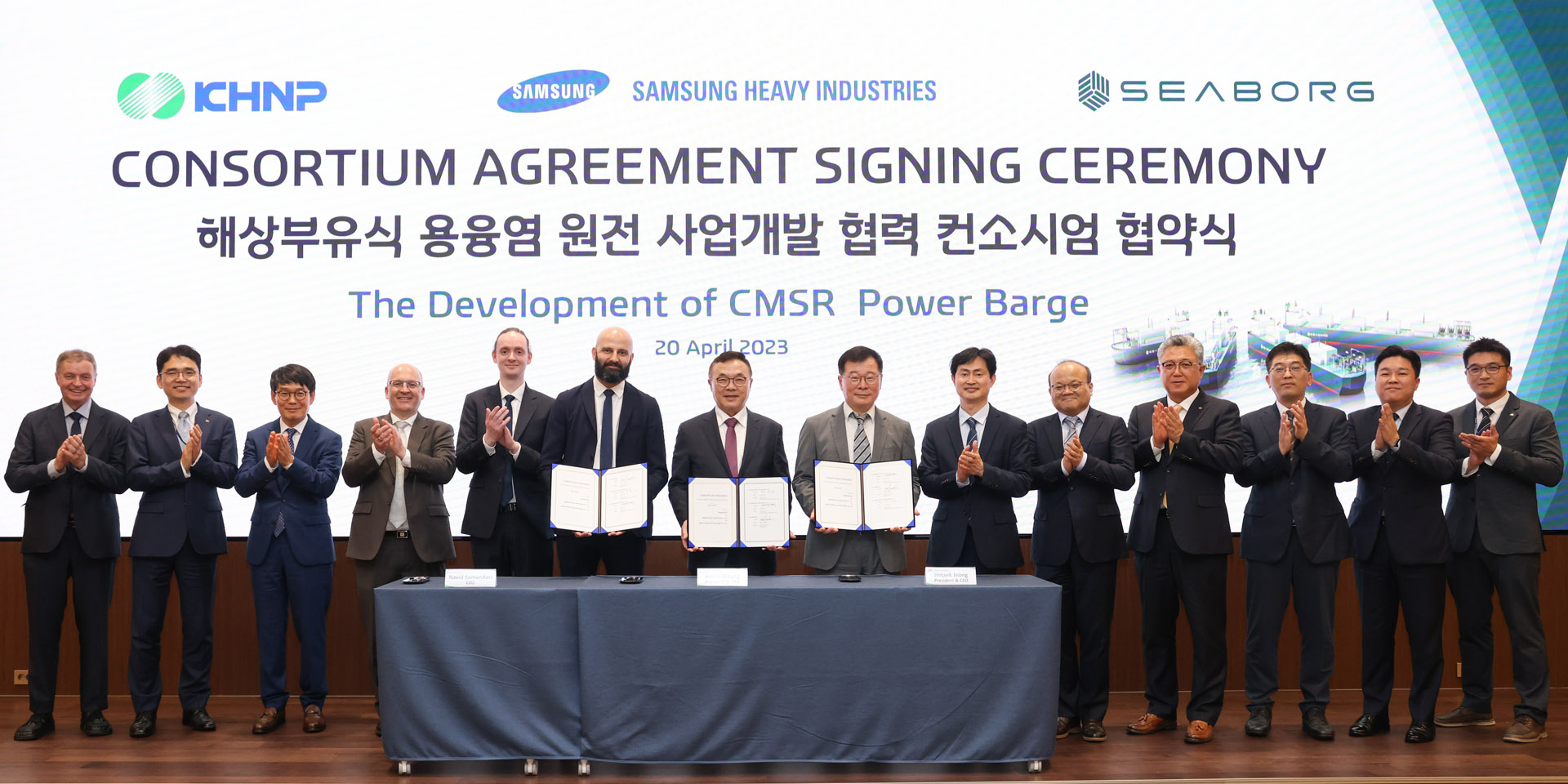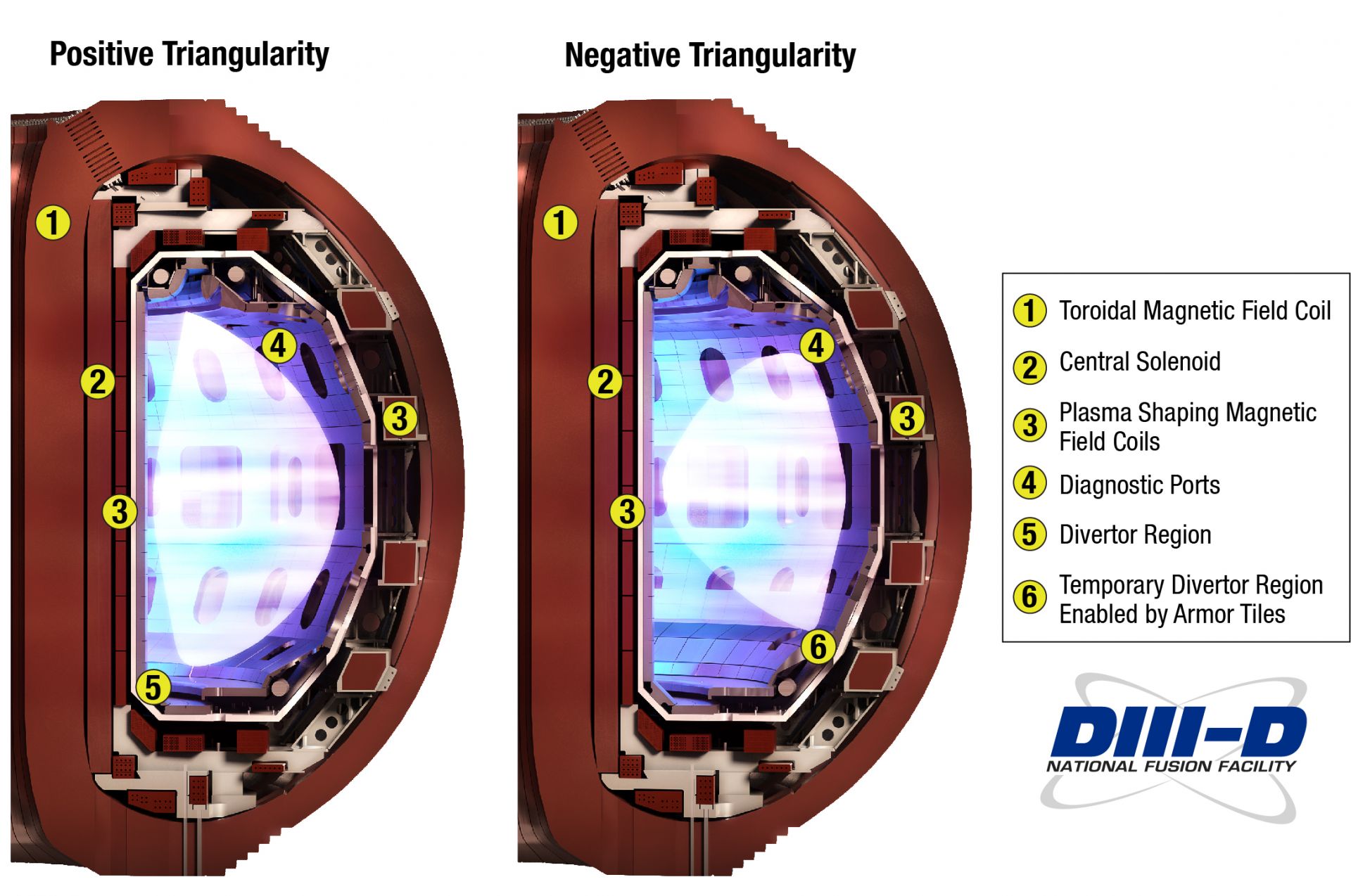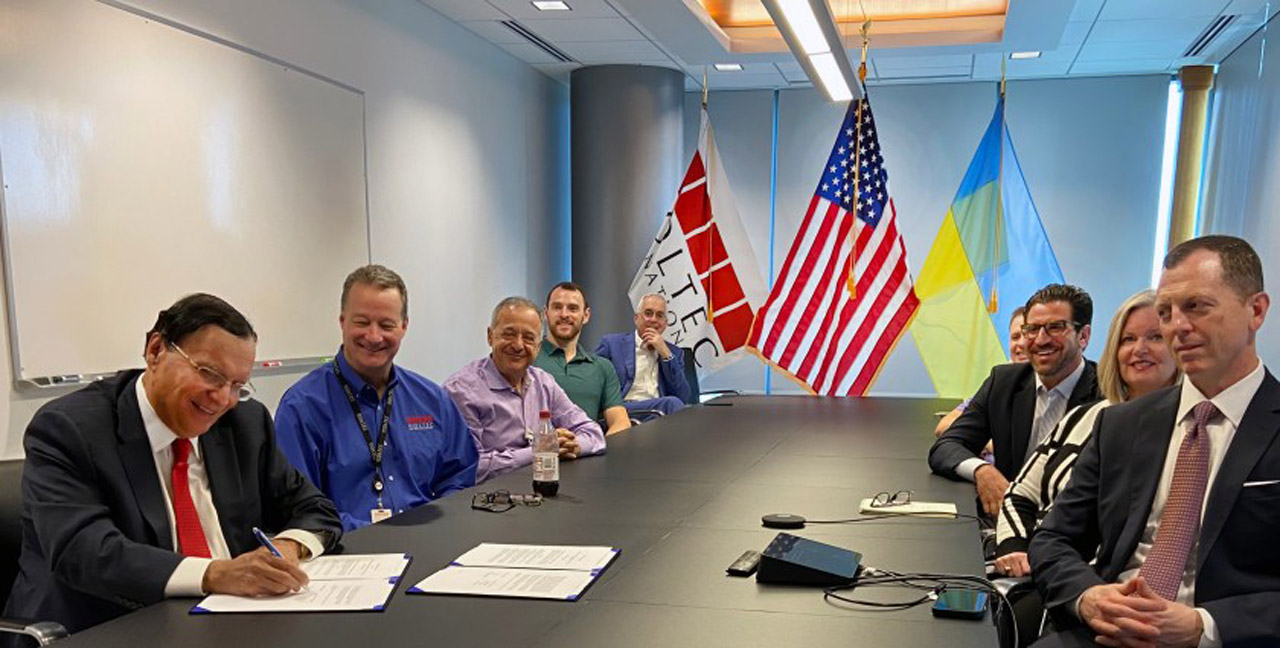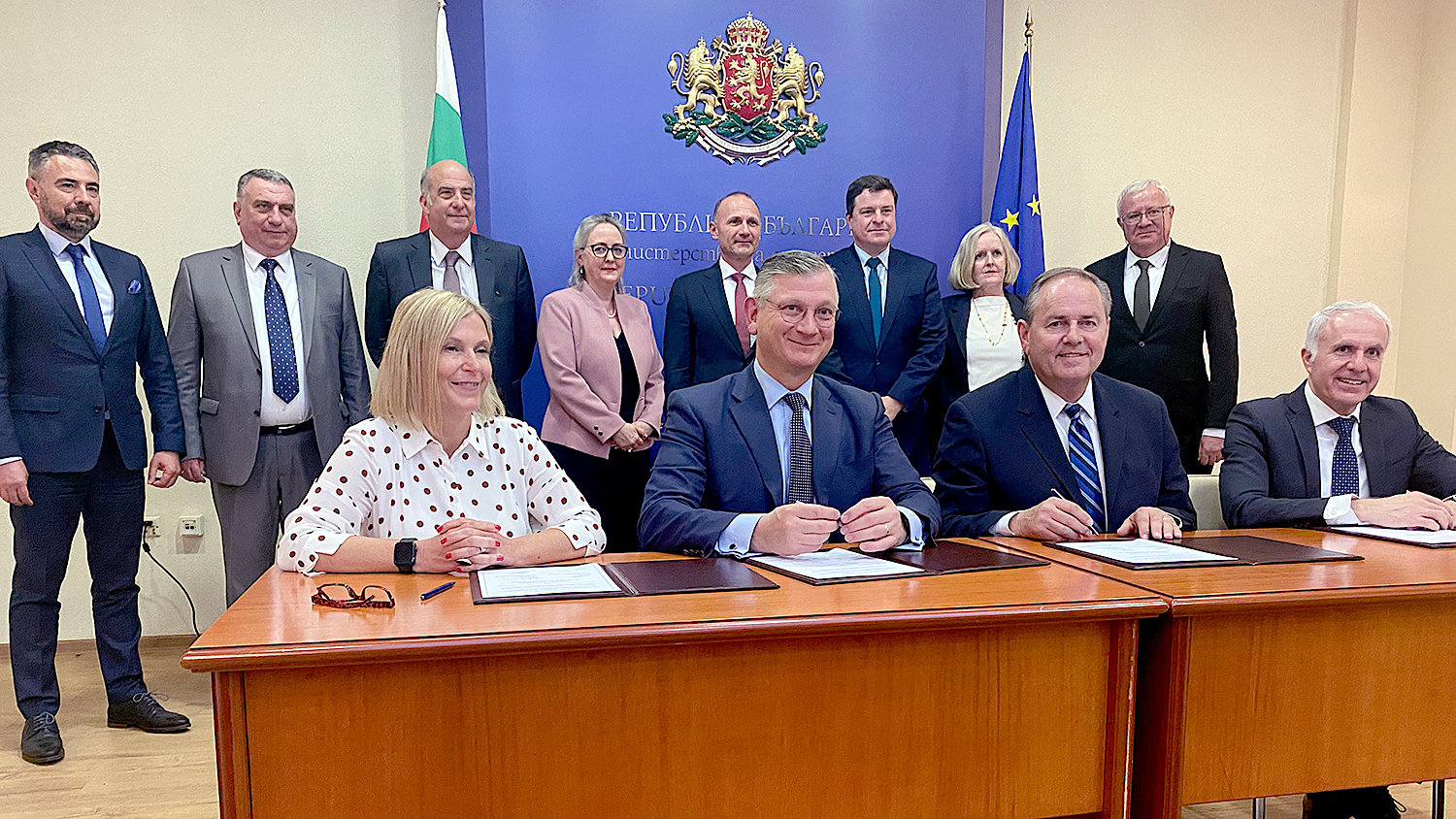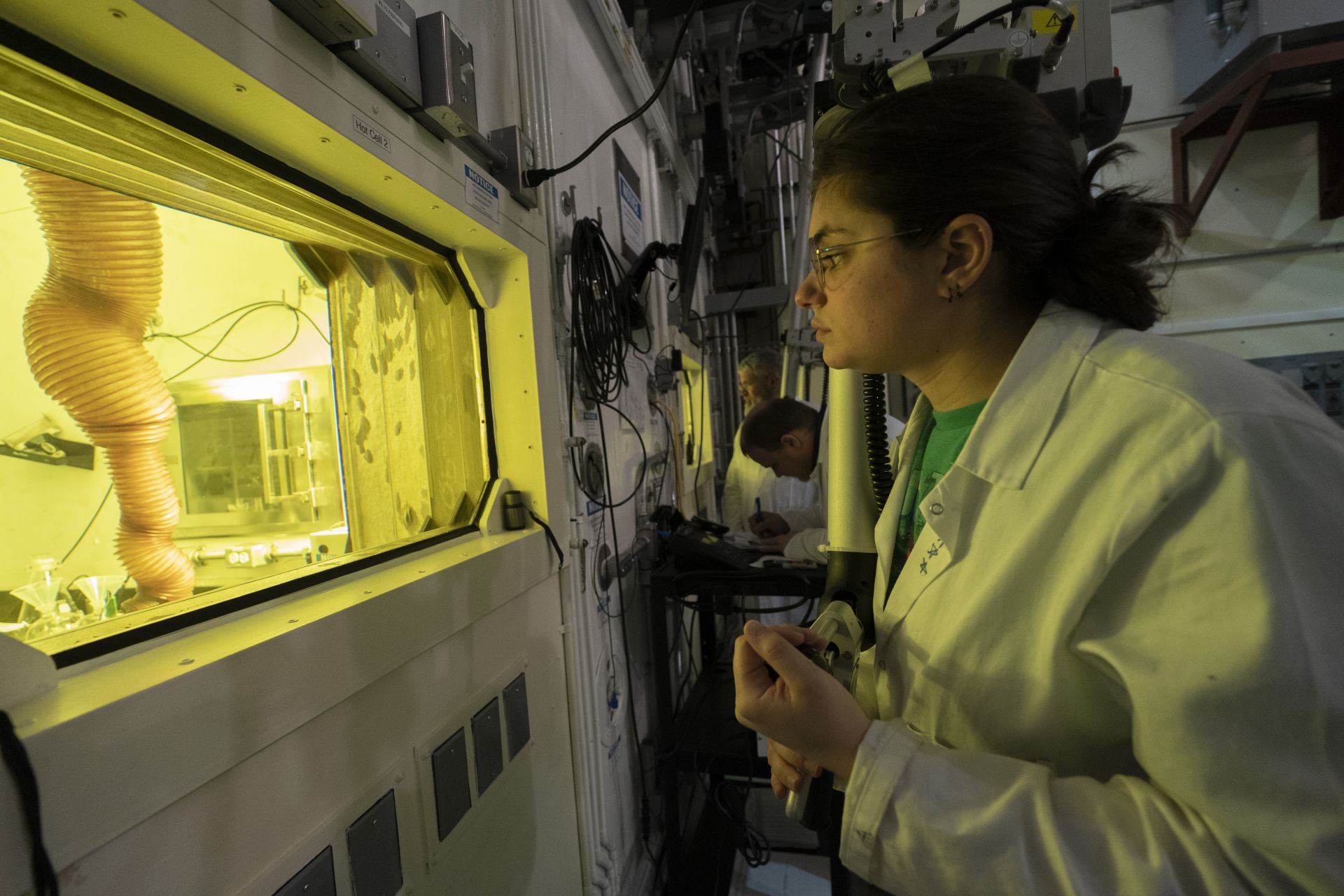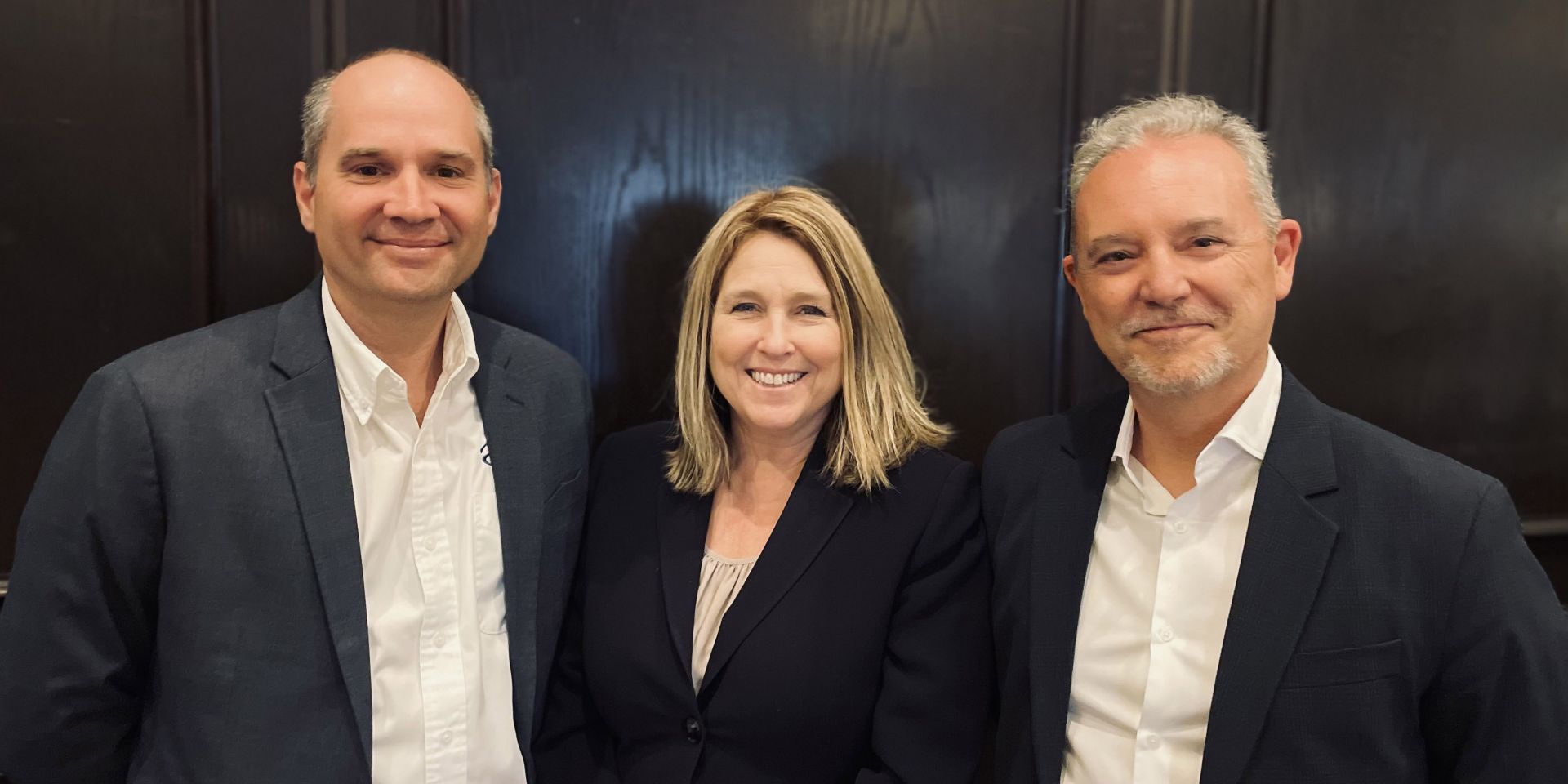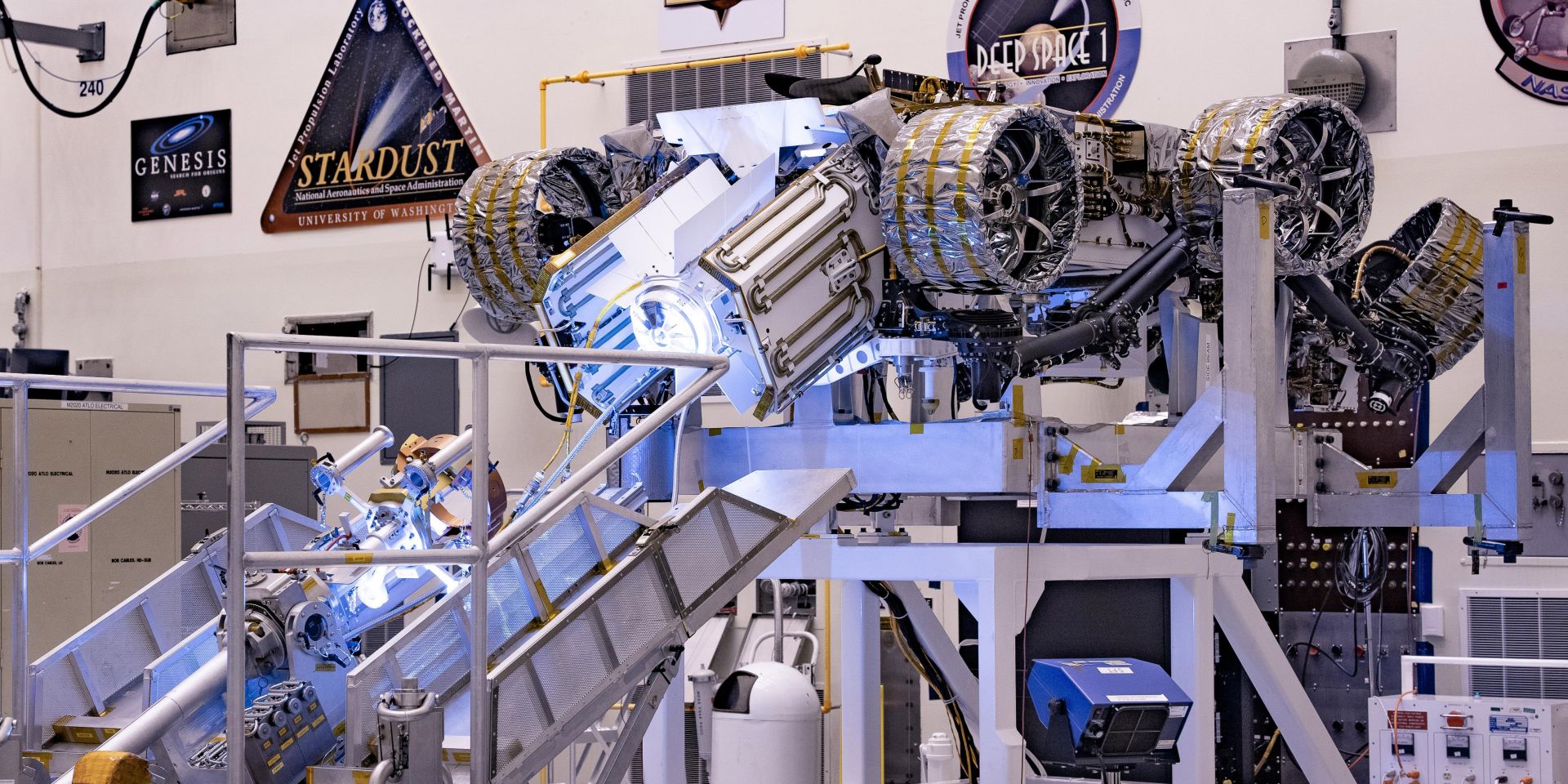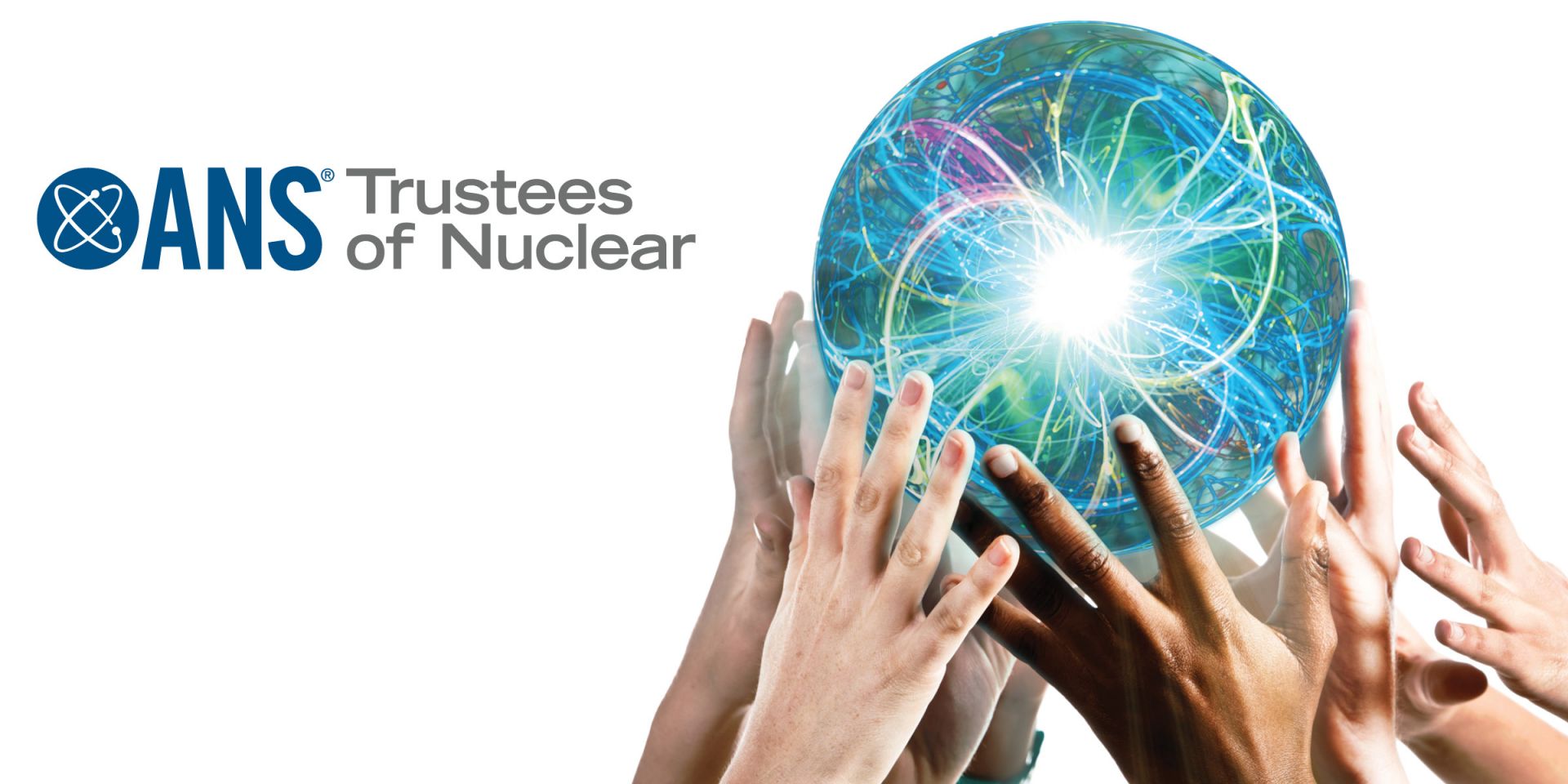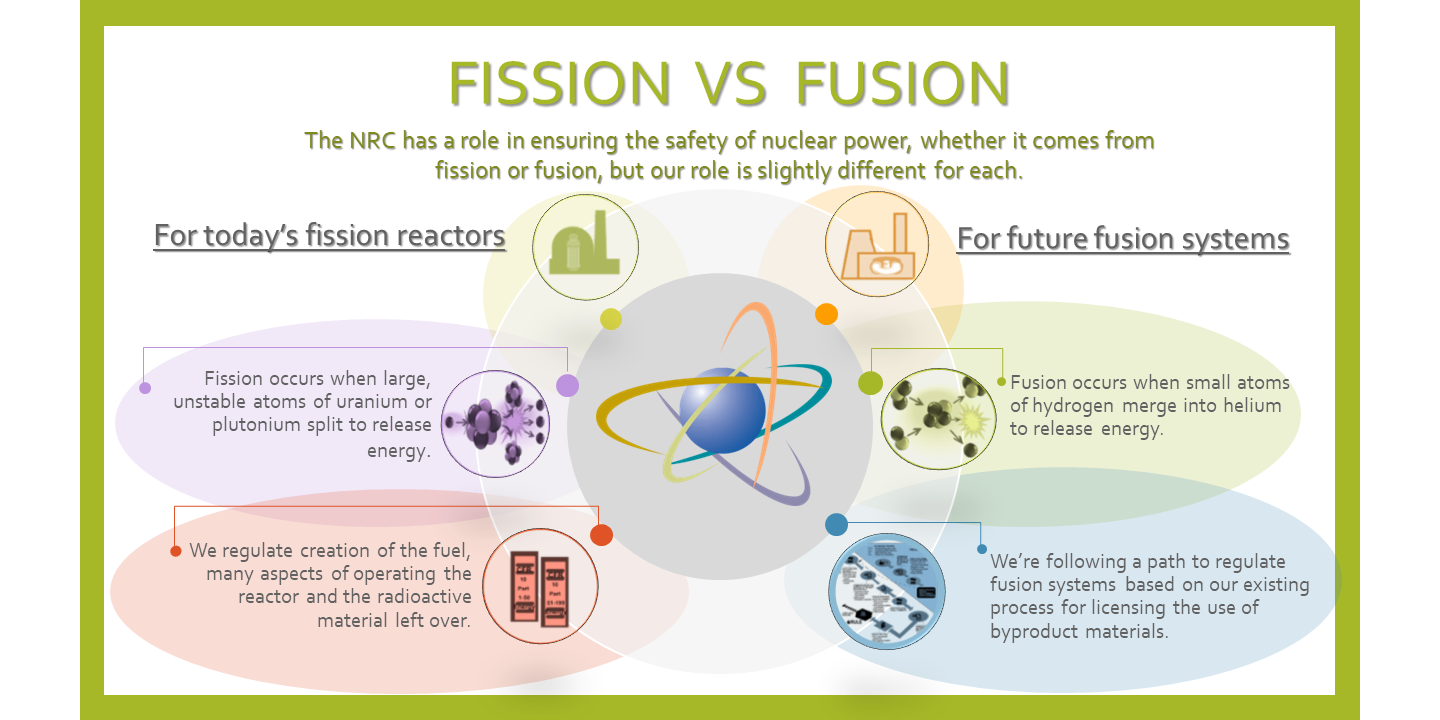A south-facing view of the Dillard Science and Engineering Research Center at Abilene Christian University, scheduled for completion in the summer of 2023. The new facility will provide space for ACU’s NEXT Lab, as well as for research in chemistry, physics, and engineering.
Abilene Christian University’s Nuclear Energy eXperimental Testing (NEXT) Lab continues to make progress toward building a molten salt research reactor (MSRR) on the university’s campus. NEXT Lab submitted an application for a construction permit to the Nuclear Regulatory Commission last August, and in November the agency announced it had docketed the application—the first for a new research reactor in more than 30 years.
April 27, 2023, 9:30AMUpdated April 27, 2023, 9:30AMNuclear News At table, from left: Navid Samandari, chief executive officer of Seaborg Technologies; Jooho Whang, CEO of KHNP; and Jintaek Jeong, CEO of Samsung Heavy Industries. (Photo: Seaborg Technologies)
Denmark-based Seaborg Technologies, developer of the compact molten salt reactor (CMSR), has teamed with two South Korean firms—shipbuilder Samsung Heavy Industries (SHI) and nuclear plant owner and operator Korea Hydro & Nuclear Power (KHNP)—to form a consortium for the development of floating nuclear plants featuring the CMSR. The consortium agreement was signed in Seoul on April 20.
The Department of Energy’s Office of Nuclear Energy released an updated version of its consent-based siting process on April 25. The DOE will use the process to engage with willing communities to site one or more consolidated interim storage facilities for commercial spent nuclear fuel, reducing the number of locations where spent fuel is stored and easing the burden on U.S. taxpayers.
Earthbound air travel can be a hassle, even for careful planners. So if you’re heading to the Moon or beyond, it’s time to shift your planning into hyperdrive. Our advice, when there’s no guidebook, no proven vehicle, and your destination is a moving target? Don’t forget to pack your nuclear power bank.
April 26, 2023, 12:00PMEdited April 26, 2023, 12:00PMNuclear News LLNL design physicist Annie Kritcher is honored as one of the TIME100 Most Influential People. (Photo: Blaise Douros/LLNL)
Physicist Andrea “Annie” Kritcher’s dedication to fusion target design has earned her a spot on the TIME100 Most Influential People list for 2023. Today, Kritcher and 99 other individuals on that list—among them Elon Musk, King Charles, Judy Blume, Patrick Mahomes, Beyoncé, Lionel Messi, Janet Yellen, and MrBeast—are being honored at the TIME100 Summit and Gala at the Lincoln Center in New York City.
A side-by-side comparison of a standard plasma configuration (at left) and the plasma created during the negative triangularity campaign at DIII-D, which was made possible by the installation of a temporary divertor region. (Image: General Atomics)
The DIII-D National Fusion Facility in San Diego, Calif., has completed a monthlong research campaign using a negative triangularity plasma configuration inside its fusion tokamak and produced initial data that “appear very encouraging,” according to an April 24 news release from General Atomics (GA), which operates the Office of Science user facility on behalf of the Department of Energy. Full experimental results on “the highest-powered negative triangularity experiments in the history of the U.S. fusion research program” are expected this summer, according to GA.
Kris Singh (front left), Holtec International president and chief executive officer, signs the cooperation agreement between Holtec and Ukraine’s Energoatom, alongside other Holtec officials. (Photo: Holtec)
Small modular reactor developer Holtec International and Energoatom, Ukraine’s nuclear plant operator, signed a cooperation agreement last Friday that envisions the construction of up to 20 of the American firm’s SMR-160 units in Ukraine, with grid connection for the pilot project achieved by March 2029. In addition, the agreement calls for building a Ukrainian manufacturing facility to localize the production of equipment required for SMR-160 construction.
Various officials (back row) look on at the fuel supply contract signing in Sofia, Bulgaria. Front row, from left: Angie Darkey, Uranium Asset Management’s managing director; Boris Schucht, Urenco CEO; Tim Gitzel, Cameco president and CEO; and Aziz Dag, Westinghouse senior vice president of global BWR & VVER fuel business.
Canada’s Cameco and U.K.-based Urenco last week jointly announced the signing of agreements to become part of a Westinghouse-led fuel supply chain for Bulgaria’s Kozloduy nuclear power plant. (Also included in the partnership is Uranium Asset Management.)
From left: Francesco Venneri, chief executive officer of USNC; Hong Hyun-seong, CEO of Hyundai Engineering; and Park Kyung-il, CEO of SK ecoplant, following the signing of an MOU for the construction of a hydrogen micro hub. (Photo: USNC)
Seattle’s Ultra Safe Nuclear (USNC) has announced a partnership with two South Korean firms—Hyundai Engineering and SK ecoplant—for research and development on carbon-free hydrogen production. The three companies signed a memorandum of understanding on April 20 regarding the construction of a “hydrogen micro hub” at SK ecoplant’s headquarters in Seoul’s Jongno-gu district.
A member of Brookhaven’s MIRP team in the new hot cell area used for processing targets to make medical isotopes such as actinium-225. (Photo: BNL)
A refurbished hot cell laboratory is allowing the Department of Energy’s Brookhaven National Laboratory to streamline the production and shipment of actinium-225 to support clinical trials of cancer therapies.
 Here is a recap of industry happenings over the past months:
Here is a recap of industry happenings over the past months:
ADVANCED REACTOR MARKETPLACE
Ultra Safe and Framatome reach TRISO agreement
Ultra Safe Nuclear and Framatome have signed a nonbinding agreement to manufacture commercial quantities of TRISO fuel for advanced reactor designs, including USNC’s Micro Modular Reactor. It is expected that the manufacturing of both TRISO fuel particles and USNC’s fully ceramic microencapsulated fuel will begin in late 2025, with production capacity being made available to the broader global commercial market. At-scale production lines for these materials have been demonstrated at USNC’s Pilot Fuel Manufacturing facility in Oak Ridge, Tenn., the first privately funded producer of TRISO fuel particles in the United States.
From left: Billy Mack, president of Accelerant Solutions; Pamela Cowan, president of global engineered systems and solutions at Westinghouse; and Francisco Sanchez, vice president of safety, operation, and training at Tecnatom, after signing the teaming agreement creating the Nuclear Excellence Academy. (Photo: Westinghouse)
Westinghouse Electric Company has signed an agreement with engineering firm Tecnatom and training/consulting services provider Accelerant Solutions to launch a nuclear training program for utilities in the United States and Canada. (Westinghouse completed a 50 percent acquisition of Spain-based Tecnatom in March of last year.)
The program—the Nuclear Excellence Academy (NEXA)—will combine Westinghouse and Accelerant Solutions’ industry expertise with Tecnatom’s digital products and services to provide in-person, digital, and on-demand training for nuclear personnel, according to an April 18 Westinghouse announcement.
April 21, 2023, 3:19PMNuclear NewsSal Oriti, Ernestina Wozniak, and Max Yang The multimission radioisotope thermoelectric generator for NASA’s Mars 2020 Perseverance rover is tested at NASA’s Kennedy Space Center in 2020. The choice of an MMRTG as the rover’s power system gave mission planners significantly more flexibility in selecting the rover’s landing site and in planning its surface operations. (Photo: NASA)
Under the Radioisotope Power Systems Program, NASA and the Department of Energy have been advancing a novel radioisotope power system (RPS) based on dynamic energy conversion. This approach will manifest a dynamic RPS (DRPS) option with a conversion efficiency at least three times greater than a thermoelectric-based RPS. Significant progress has recently been made toward this end. A one-year system design phase has been completed by NASA industry partner Aerojet Rocketdyne, which resulted in a DRPS with power of 300 watts-electric (We) with convertor-level redundancy. In-house technology development at the NASA Glenn Research Center (GRC) has demonstrated the conversion devices in relevant environments and has shown all requirements can be met. Progress has also been made on the control electronics necessary for dynamic energy conversion. Flight-like controllers were recently upgraded and achieved an 11-percentage-point increase in efficiency. Control architectures have been developed to handle the multiconvertor arrangements in the latest DRPS design. A system-level DRPS testbed is currently being assembled that will experimentally demonstrate the DRPS concept being pursued.
Joo Han-Gyu, KAERI president, on teleconference with Albertan ministers Brian Jean and Rajan Sawhney during the signing of the MOU. (Photo: KAERI)
The Korea Atomic Energy Research Institute (KAERI) and the government of Alberta have agreed on a comprehensive cooperation framework to explore the viability of using small modular reactors to help decarbonize the province—Canada’s biggest energy producer and its biggest polluter. The announcement comes the same week that Alberta’s United Conservative Party government released a climate plan aimed at reaching net zero by 2050.
A rendition of Terrestrial Energy’s IMSR. (Image: NRC)
The Canadian Nuclear Safety Commission (CNSC) has completed phase two of its prelicensing vendor design review for Terrestrial Energy’s Integral Molten Salt Reactor (IMSR), the Ontario-based advanced nuclear technology firm announced Tuesday. Phase one of the VDR commenced in April 2016 and was completed in November of the following year.
The ministers representing their respective nations as the statement on civil nuclear fuel cooperation was announced were (from left) Jonathan Wilkinson, minister of natural resources of Canada; Yasutoshi Nishimura, Japan’s minister of economy, trade, and industry; Jennifer Granholm, U.S. energy secretary; Grant Shapps, U.K. energy security secretary; and Agnes Pannier-Runacher, French minister for energy transition.
A civil nuclear fuel security agreement between the five nuclear leaders of the G7—announced on April 16 on the sidelines of the G7 Ministers’ Meeting on Climate, Energy and Environment in Sapporo, Japan—establishes cooperation between Canada, France, Japan, the United Kingdom, and the United States to flatten Russia’s influence in the global nuclear fuel supply chain.
In the new year, ANS launched Trustees of Nuclear, a corporate partnership program ANS executive director/chief executive officer Craig Piercy announced in the January issue of Nuclear News (p. 25). The goal of Trustees of Nuclear is to directly support ANS’s programs aimed at improving nuclear literacy, like the Society’s K-12 nuclear STEM activities, public engagement, and discussions with policymakers. As the main professional organization for the whole nuclear discipline, ANS is in a unique position to unite leaders in the nuclear community to focus on these long-term programs and help the country realize the full potential of the atom.
Germany may have walked away from nuclear energy, but just across the border, Poland continues to stride confidently toward it.
After solidifying plans in February for deploying Westinghouse’s AP1000 reactors in Poland, Polskie Elektrownie Jądrowe (PEJ) on April 13 submitted an application to the Ministry of Climate and Environment for a decision-in-principle regarding the nation’s initial nuclear project—construction of an AP1000 plant at a site some 40 miles northwest of Gdansk, the capital of Poland’s Pomeranian province.
The Nuclear Regulatory Commission announced on April 14 that it will regulate fusion energy systems using a framework based on the agency’s 10 CFR Part 30 process for licensing byproduct material facilities—such as particle accelerators—rather than 10 CFR Parts 50 and 52, which are used to license utilization facilities like fission power reactors. The commission’s decision means that future fusion energy facilities could be regulated by Agreement States acting with guidance from the NRC.
Representatives of six nuclear organizations sign a declaration in Sapporo, Japan. Seated, left to right, are George Christidis (representing CNA chief executive officer John Gorman), Shiro Arai, Maria Korsnick, Tom Greatrex, Yves Desbazeille, and Sama Bilbao y León. (Photo: World Nuclear Association)
G7 governments should support life extension for today’s power reactor fleet, restart operable units, and accelerate the deployment of advanced reactors, states a joint declaration issued April 16 at the Nuclear Energy Forum, a first-of-its-kind colloquy held on the margins of the G7 Ministers’ Meeting on Climate, Energy and Environment in Sapporo, Japan.



